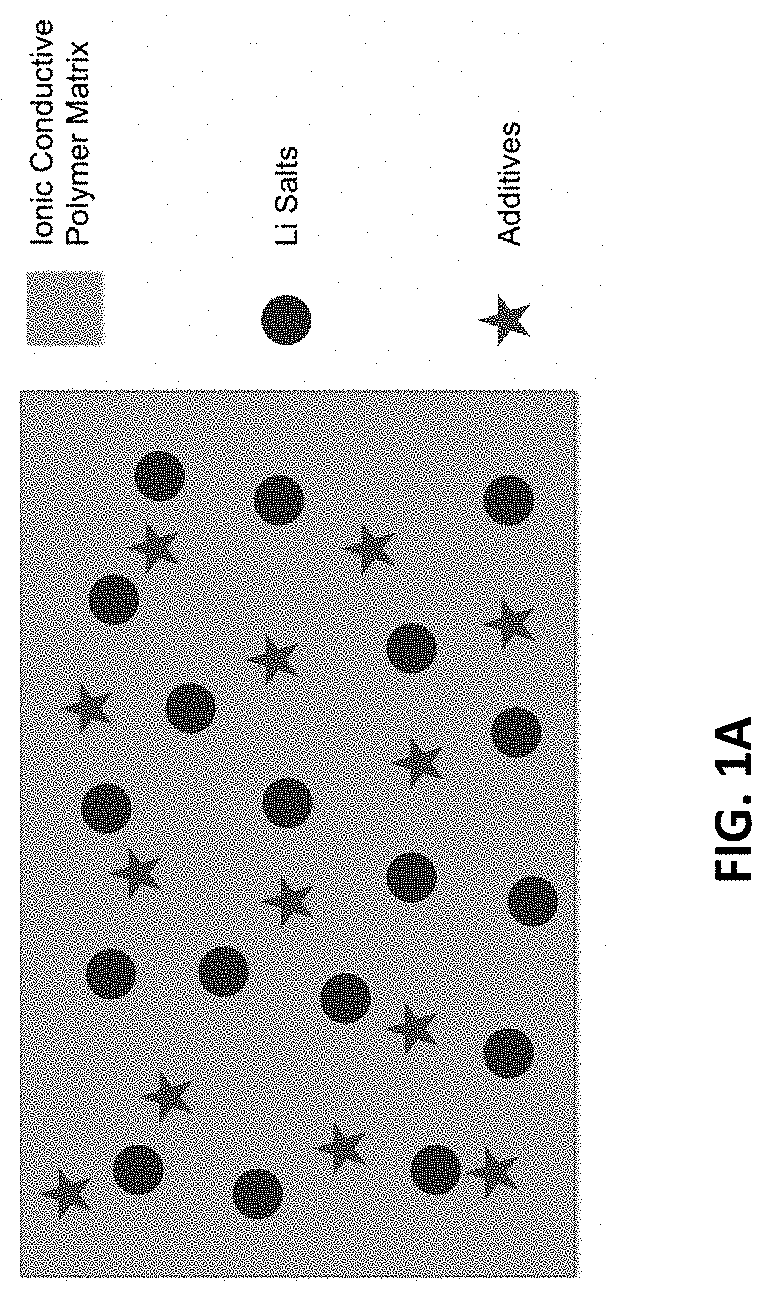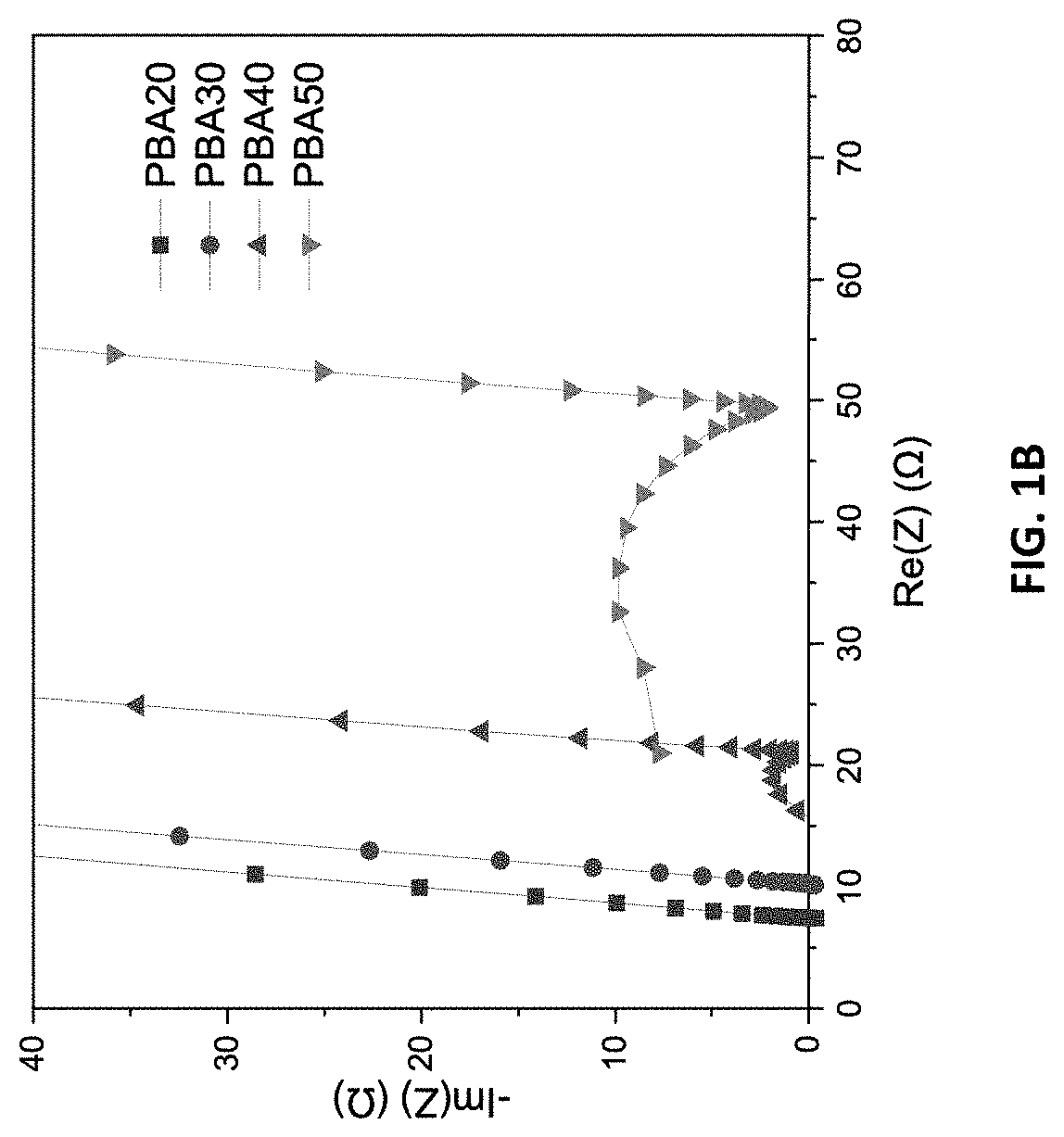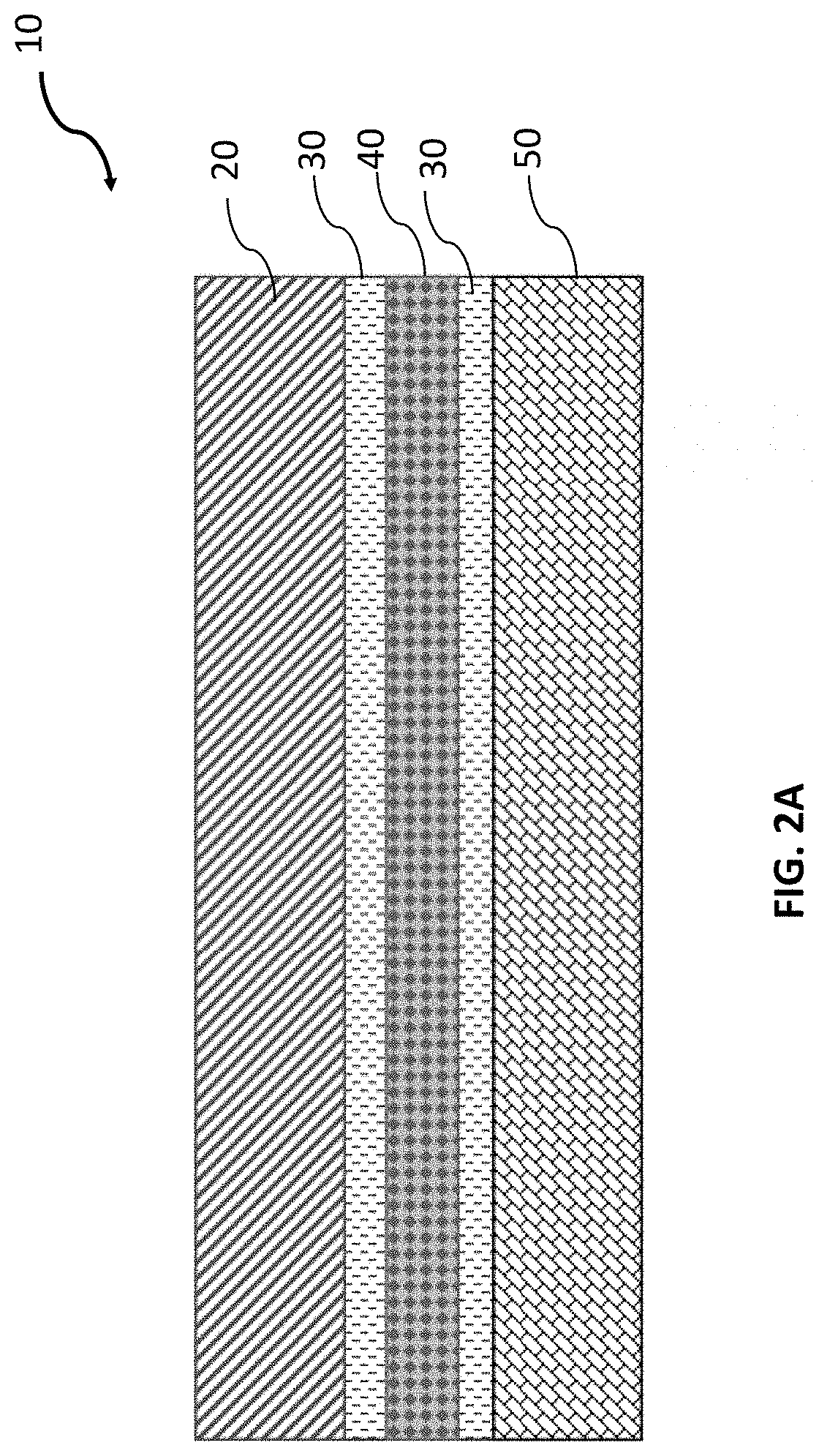Synchronous polymerized non-flammable quasi-solid-state electrolyte for solid-state batteries
a non-flammable, quasi-solid-state electrolyte technology, applied in the field of rechargeable batteries, can solve the problems of poor interfacial contact between ceramic-type solid-state electrolytes and active materials, loe may leak and catch fire, and significant risk
- Summary
- Abstract
- Description
- Claims
- Application Information
AI Technical Summary
Benefits of technology
Problems solved by technology
Method used
Image
Examples
example 1
[0046]The synchronous non-flammable quasi-solid-state electrolyte is prepared by mixing the monomer, Li salts, cross-linker, thermal initiator, and additives at room temperature to form a precursor mixture. The precursor may be drop-casted, impregnated or printed on the separator surface. After polymerization for 12 hours at a temperature in the range of 40° C. to 80° C., a free-standing membrane with the separator as support can be formed with a thickness in the range of 0.01 mm to 0.5 mm. The schematic of the components in the synchronous non-flammable quasi-solid-state electrolyte is depicted in FIG. 1A. Four synchronous non-flammable quasi-solid-state electrolyte with 20%, 30%, 40%, and 50% by weight of PBA denoted by PBA20, PBA30, PBA40, PBA50 respectively are prepared using a polypropylene separator as support.
[0047]The resulting free-standing NF-QSSEs were tested for room temperature ionic conductivity by electrochemical impedance spectroscopy (EIS). The testing results are s...
example 2
[0048]The electrochemical stability of the synchronous non-flammable quasi-solid-state electrolyte can be evaluated by assembling it with electrodes. The schematic of the battery assembly is shown in FIG. 2A where the cathode is stainless steel and the anode is lithium metal. The electrochemical stability was tested by cyclic voltammetry (CV) and linear sweep voltammetry (LSV).
[0049]FIG. 2B shows the electrochemical stability of PBA20 which shows no noticeable oxidation peak until 4.5V (vs. Li / Li+). The result demonstrates that PBA20 is electrochemically stable and compatible with the most common electrode materials such as lithium, lithium titanium oxide, graphite, silicon, lithium iron phosphate, lithium cobalt oxide, lithium manganese oxide, lithium nickel cobalt aluminum oxide, and lithium nickel manganese cobalt oxide.
example 3
[0050]The synchronous process to prepare the solid-state battery is depicted in FIGS. 3A-3C. The process starts with assembling of anode, cathode, and separator, similar to the conventional manufacturing process of Li-ion batteries. After that the precursor mixture from Example 1 is injected into the battery assembly, followed by vacuum sealing of the battery package. The assembled battery is subjected to synchronous polymerization at a range of temperatures from 40° C. to 80° C. for 0.5 hours to 20 hours. The solid state battery is obtained after cooling down to room temperature.
[0051]To evaluate the battery performance of the solid-state battery with the synchronous non-flammable quasi-solid-state electrolyte, four solid-state batteries using PBA20, PBA30, PBA40, and PBA50 are prepared and investigated in the voltage range of 2.5V to 4V. In addition, a battery using a conventional liquid organic electrolyte was also prepared for comparison. Li was the anode and LFP was the cathode...
PUM
| Property | Measurement | Unit |
|---|---|---|
| thickness | aaaaa | aaaaa |
| temperature | aaaaa | aaaaa |
| ionic conductivity | aaaaa | aaaaa |
Abstract
Description
Claims
Application Information
 Login to View More
Login to View More - R&D
- Intellectual Property
- Life Sciences
- Materials
- Tech Scout
- Unparalleled Data Quality
- Higher Quality Content
- 60% Fewer Hallucinations
Browse by: Latest US Patents, China's latest patents, Technical Efficacy Thesaurus, Application Domain, Technology Topic, Popular Technical Reports.
© 2025 PatSnap. All rights reserved.Legal|Privacy policy|Modern Slavery Act Transparency Statement|Sitemap|About US| Contact US: help@patsnap.com



